What to Paint |
||||||||||||||||
|
Page 13 / 14
SELECTION AND TREATMENT OF A SUBJECTCHAPTER XIITHE raison d’etre of the existence of the landscape painter is that he can discern and reveal to us beauties in Nature which cannot be revealed by the sister arts. He delights in his expression of Nature, and trusts that he may interest others ; but if he is a true artist he is not over anxious on that score. Great work is always in advance of public appreciation. It has been so in the past, and is likely to be so in the future. The selection of a subject is a problem which faces the painter at the outset of his work. No matter how beautifully a picture may be executed, if its subject has been filched from the domain of literature or music, it is, from the highest standpoint, a failure. When you go to Nature to select a subject, remember there are others, employing other means of expression, who also wish to tell the story which she inspires. Bearing this in mind, you may be able to find some subject which can only be expressed suitably by the painter, and with that conviction you should have confidence sufficient to carry you through to a successful issue. Therefore if you have a method of expression different from (though not necessarily better than) that of the poet, or musician, you must learn in what that difference consists, lest you all unwittingly stray into their domains. I do not say you should not paint a literary subject, but you should not paint it merely to express its literary aspect. You can, or ought to be able to, add to the literary allusion new meanings conveyed by the charm of form and colour. 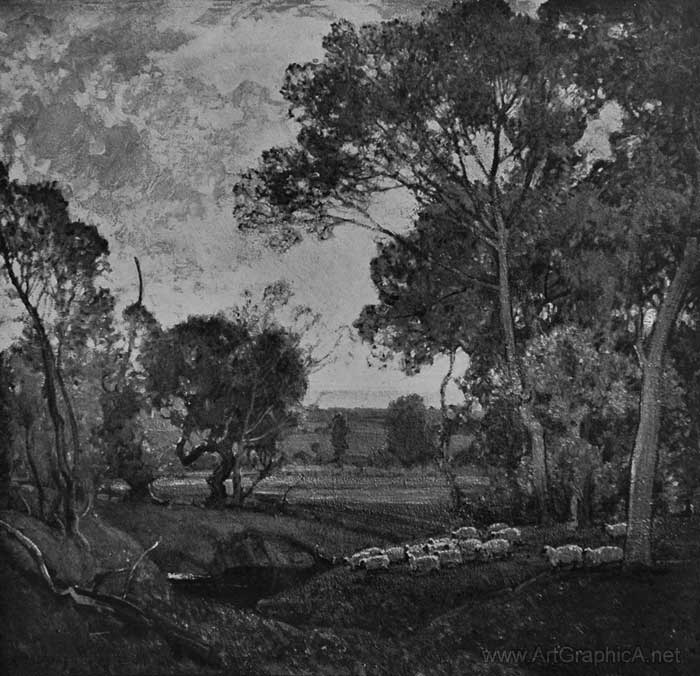 A Midland Valley. Excepting what I have said, it is your privilege to take what you want from Nature, you are free to make selection from the material before you; but be sure your selection is such as can he best expressed by painting. Therein lies your responsibility. In the matter of selection, too, there arises the problem of the possible overcrowding of a picture. The artist feels he cannot paint everything, and the question is-- what to paint? He is forced to make his selection from subjects in his district, and as he descends to details, the task of selection becomes more and more difficult. Half-a-dozen artists may paint the same subject under the same conditions, and yet how different are the results! That is because one has been influenced by one thing, Which specially appealed to him, and the others have been each affected by other qualities. Every result will be more or less like Nature, but all will differ from each other. Now imagine these six artists painting the same subject, but each selecting for himself the particular effect under which he would paint it; the difference then would be very much more marked. One might think that the early morning effect best suited the simplicity of the landscape, another the light of noon, while a third might feel that the evening glow of colour gave the best effect to the material. I have painted eight sketches of the same subject under different effects to illustrate my meaning. These sketches will probably bring home to you the truth of the responsibility of the artist in the treatment of his subject, and the particular effect under which he elects to paint it. The selection is left to his discretion entirely ; it is for him to say which of the effects from dawn to sunset he will choose. If I ventured to give him any advice at all, it is simply to say, paint the effect which best harmonises with the landscape--that which most enhances the beauty of its leading characteristics. In this selection he will show what stuff he is made of, for, as I have said, he is a free agent, and Nature offers such an ample choice that there is no excuse for failure. The artist who loses his opportunity may attempt to shelter himself behind the assertion that his picture is like Nature. There are many bad pictures very like Nature in some respects ; but such a claim is inadequate, for the painter may have represented Nature in her worse mood, and under the most unsuitable conditions. It is absolutely necessary that the subject for painting should be selected with this consideration fully borne in mind. You cannot shirk your responsibility, so do not rush to a decision lest you have to beat an ignominious retreat. The first aim, then, in the selection of a subject for painting must be that your subject conforms to the limitations and conditions of your art, and it should be such an one as cannot be better expressed by any other branch of art. Secondly, see that you paint your subject under conditions that will best bring out its special characteristics. Next we must consider what are the qualities essential to support its characteristics, and what are non-essential. Nature is so prolific in her offerings that selection becomes an artistic quality of the first order. It is astonishing what one can see in Nature if one is predisposed to look for it. Some painters see Nature almost monochromatic, others see it polychromatic. One sees the immensity of its details and analyses its component parts. One may look for the big facts, and another for the little ones. One is moved by the simplicity of Nature, and another by its complexity. Perhaps the highest and rarest gift is the power to see the big things of Nature, the real essentials, those which reveal and stamp upon the mind of man those fundamental qualities by which it is expressed. If an artist can so discipline himself when painting from Nature as to accept only those things which arc great and characteristic, and paint them in their true relation to each other, i.e. in their just values, then his pictures will possess that quality so difficult of definition which we call " style." Let me caution you never to be tempted to paint a landscape because of some accidental prettiness in it. Such an impulse is always dangerous and sometimes fatal, to the success of your work. I have known a person to paint a six-foot picture in order to include a distant mill or church. If he had reflected for a moment that this church or mill covered exactly one square inch within twenty- eight superficial feet, he might have seen at once the foolish waste of his effort. Do not be tempted by anything, no matter how charming it may be in itself ; remember it can only be beautiful for your purpose in so far as it assists your general scheme. 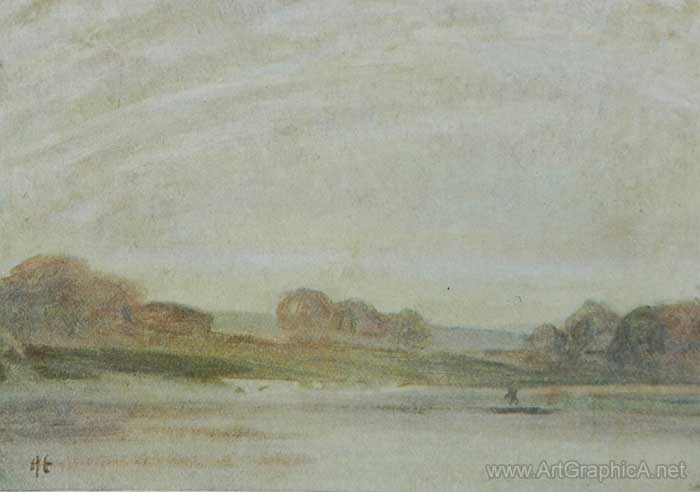 Early Morning. 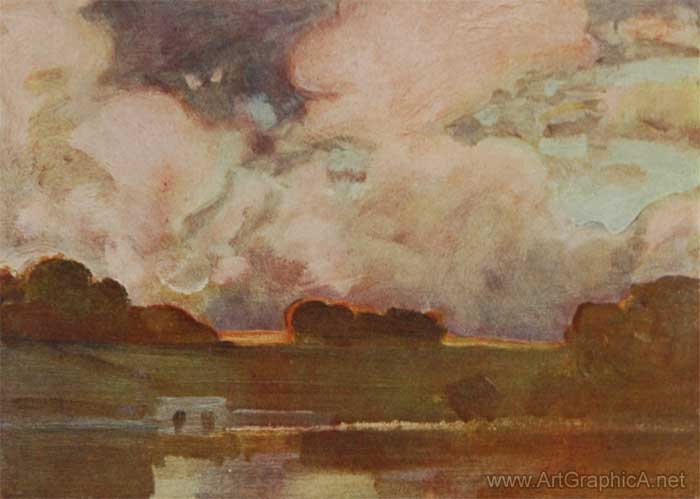 Stormy Dawn. 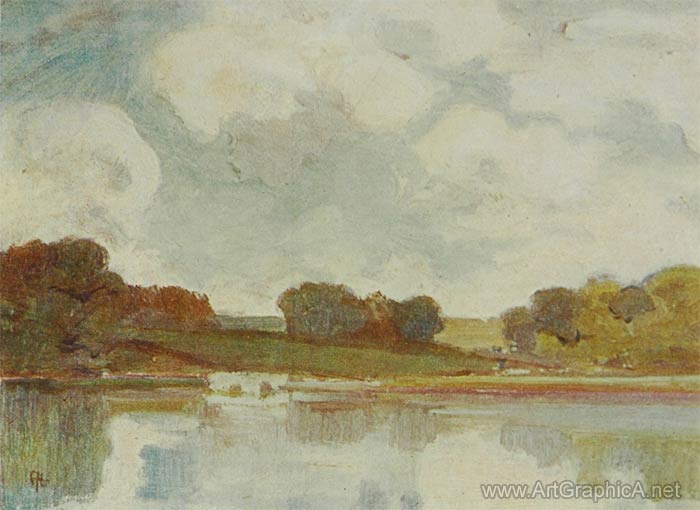 Noon. 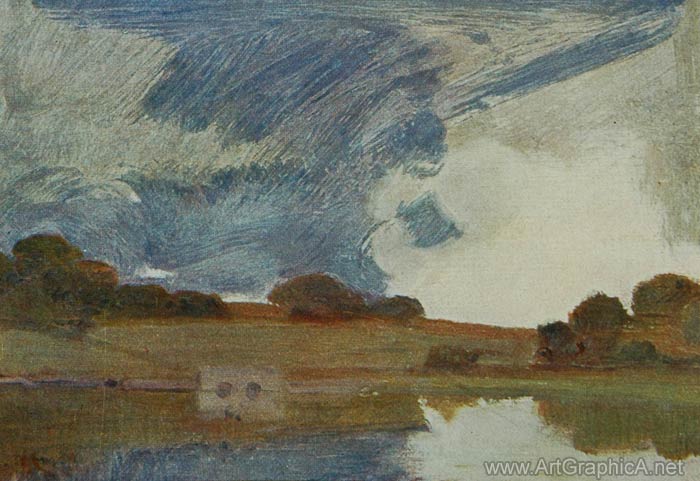 Cloud Shadow. 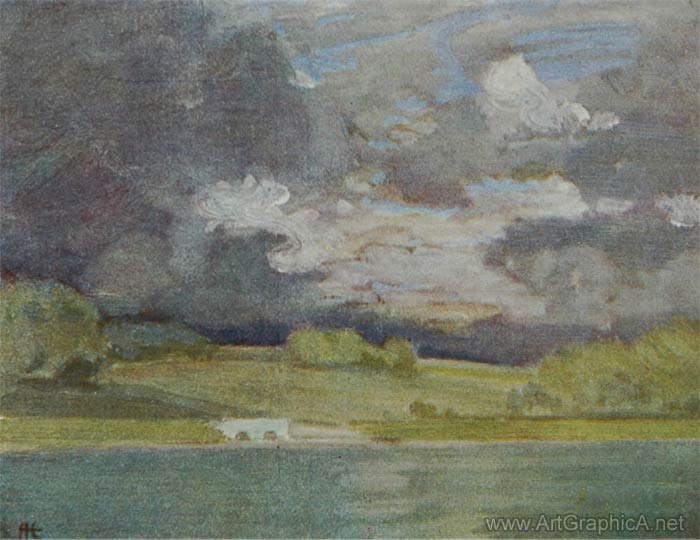 Storm. 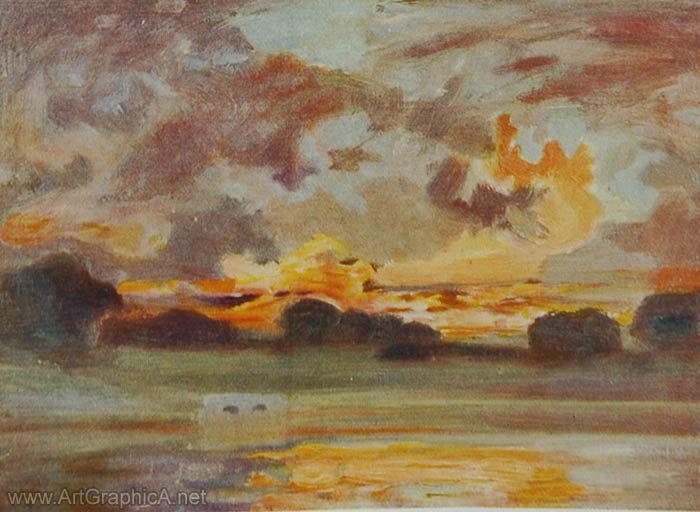 Sunset. 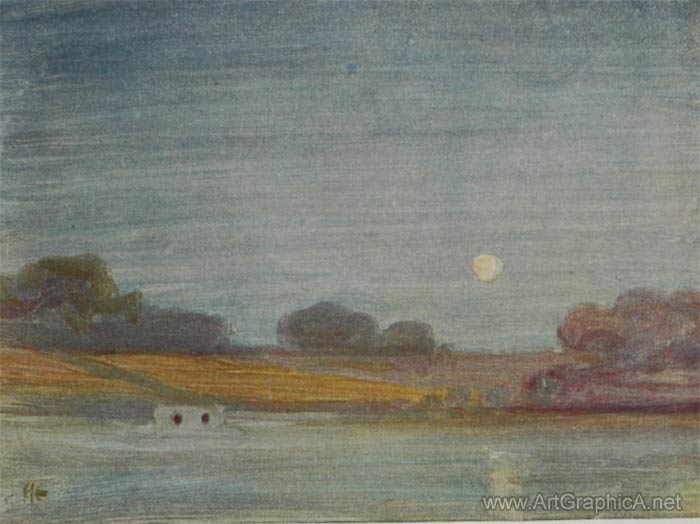 Moonlight. 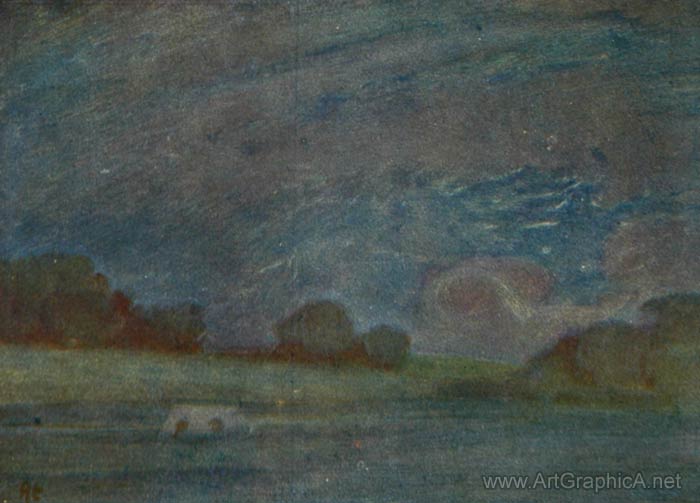 Night. In the eight sketches which illustrate this chapter, you will see that I have represented the same subject (a very simple one) in its varying effects from dawn to sunset. There is little or no difference in the arrangements of the trees and fields, the bridge and water, yet how great the contrast between No. 1 and No. 8. These sketches give you suggestions of the possibilities by which any subject can be painted in different ways. But had I selected a finer subject, the result would, probably, have been still more interesting. If the illustrations show you the outward form of Nature under different conditions which reveal the subtleties of morning and evening, with but little material by which to express their peculiar glamour, how much more beautiful would the dawn or sunset be when associated with really fine material, which would assist the peculiar qualities one associates with these fascinating moments. Note, for instance, the real background of Turner's "Sun of Venice going to Sea." Revealed by the camera, one sees a row of buildings, interesting enough as ordinary dwelling-places, with all the hard details of their construction ; but with Turner, they are almost lost by the glamour and mystery of the morning, wherein a thousand thoughts and associations of ideas crowd into our minds which are absent in the photograph. The glamour was not created by the accurate and faithful delineation of the material, but by that magic of treatment which raises it to the splendour of a work of art. I am fully aware that my readers cannot all be Turners ; but they may cultivate that insight of Nature that can see possibilities of splendour in the ordinary landscape around them. 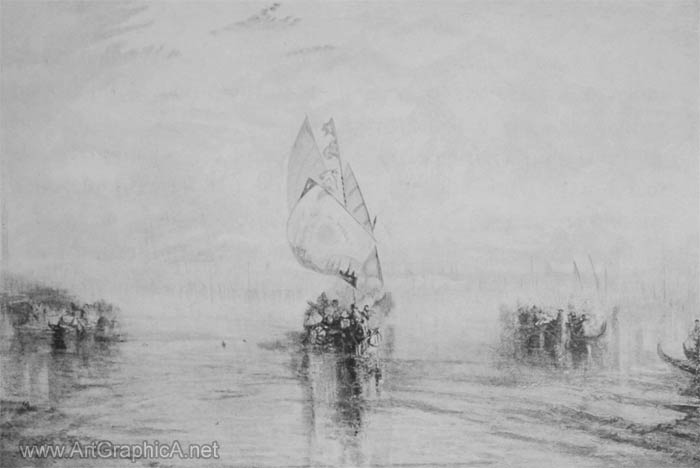 The "Sun of Venice" Going to Sea. FRom the PAinting by JMW. Turner. 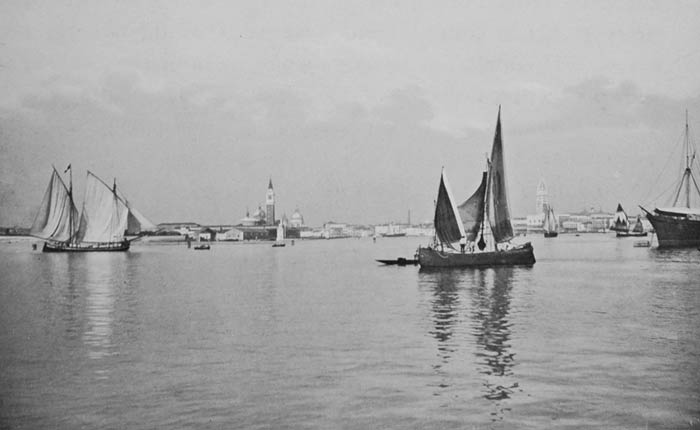 Venice from the Lagoon. From a photograph by Alinari, Florence.
Next Page
Prev PagePlein Air Distance in Painting
|
||||||||||||||||








